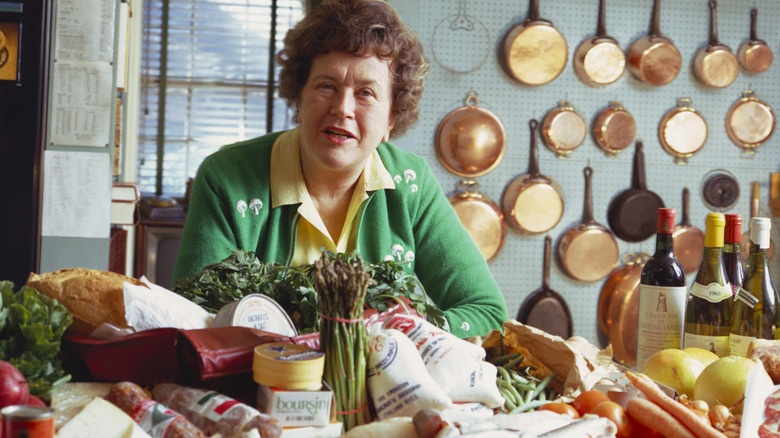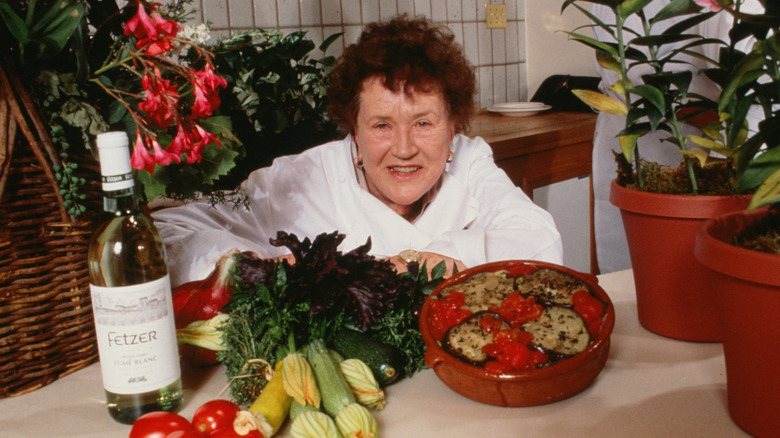The Step Julia Child Never Skipped When Buying Produce
If there's one thing that's sacrosanct to cooks, it's choosing fresh produce, and Julia Child was no exception. The revered chef and culinary icon had a process in place for picking vegetables and meat, and always ran a checklist before dropping them in her cart. Chief among her steps was a high-priority detail. While smelling fruits and vegetables before buying them is a thumb rule for any shopper, Julia insisted on "really breathing it in". She once advised a curious fan who wanted to understand her selection process to "get his nose in there."
For Child, shopping mindfully was a preparatory step to selecting high-quality ingredients (you can imagine how she might have chosen leeks for her favorite potato soup). Indulging the senses – sight, sound, taste, smell, and touch – can go a long way in developing a sense of discernment. But she was only drawing on ancient knowledge. In his book "On Sense and the Sensible," Aristotle mentions how smell can even help you sift out the more nutritious produce. It can also act as a reliable indicator of sweetness in fruits.
Of course, sharpening anything, including one's nose requires practice, but Julia Child's approach can serve as an excellent starting point for beginners (even if you feel a bit like a bloodhound). She applied the same rule when selecting meat. Most experts would tell you that a clean, slightly sweet smell is a green flag, while an off-putting odor is a definite red one.
How to shop like Julia Child
Julia Child believed in getting hands-on with produce (literally), insisting that "feeling the weight" of fruits or vegetables was essential. While not all stores allow this due to hygiene concerns, try to follow it whenever possible. Key questions to ask as you feel for quality are: Do they feel light, or lack aroma? A good apple or tomato should feel dense and firm, not light or oddly mushy. If they do, it is best to eliminate them.
Color is an equally essential marker for fruits and vegetables. Rich, deep, and uniform colors reflect freshness; avoid anything with blemishes, as uneven coloring often signals issues with ripeness. Another fun fact: Your ears can come in handy, too. For instance, if the pepper rattles, it's probably past its prime; you want seeds tightly tucked away in there. Or if melons make a 'plinking' sound when knocked, and not a low, satisfying "thump," it means they're underripe and headed to the back of the shelf. The next time you shop, try indulging your senses to hone your instincts to channel your inner Julia.

